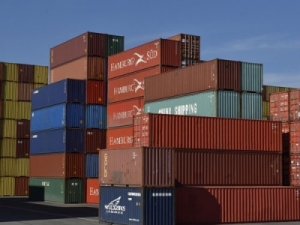MPI launches industry-wide project to manage feral deer
An industry-wide project led by Ministry for Primary Industries (MPI) is underway to deal with the rising number of feral pests, in particular, browsing pests such as deer and pigs.
 The strong growth forecast across most sectors and dairy prices expected to gradually increase over the next two years.
The strong growth forecast across most sectors and dairy prices expected to gradually increase over the next two years.
The Ministry for Primary Industries (MPI) says the outlook for New Zealand primary industries is positive.
The strong growth forecast across most sectors and dairy prices expected to gradually increase over the next two years.
MPI Director of Sector Policy, Jarred Mair, says the latest Situation and Outlook for Primary Industries (SOPI) shows that, overall, exports have returned to growth this year – providing a clear signal of the strength of our primary industries.
"New Zealand primary industry export revenue is estimated to reach over $36.7 billion in the year ending June 2016, supported by strong growth in horticulture and other primary sector exports and foods," says Mair.
Recent years have provided challenges for a number of our sectors, and underlined the highly competitive and dynamic markets we trade in.
For some sectors a drop in the New Zealand dollar has softened the impact of lower US dollar prices. Meanwhile on-farm, production across the primary sector has been relatively stable as El Nino conditions did not result in widespread drought.
"The dairy industry has responded decisively to the subdued outlook through consolidation of their businesses to improve productivity and manage their costs," says Mair.
"Dairy prices have remained weak as global supply is still abundant. New Zealand production is down marginally but export volumes are up. Production is still high in the EU [European Union], which is keeping downward pressure on prices.
"Overall there has been a 6% decline in the value of dairy exports in the past year, but an expected gradual price recovery should lead to increasing dairy export values looking out 2 to 3 years. Overall our forecasts show 34% growth out to 2020."
Mair says horticulture exports are expected to continue their run of impressive growth over the medium term.
Horticulture exports exceeded $5 billion for the first time in 2015/16. Kiwifruit exports hit record levels for the year to March 2016, and exports of wine, apples, and pears are increasing due to new plantings reaching maturity. As an example, apple and pear export revenue has doubled since 2012, estimated to reach almost $700 million for the year ending June 2016. Horticulture prices have also increased as New Zealand has maintained its position as a supplier of premium products.
"Strong growth is also being seen in exports of innovative processed foods, honey, live animal, and other products.
"The outlook for the primary sector is supported by industry's significant investments in processing capacity across the country in a range of sectors.
"Free trade agreements will also help grow our exports, while population growth and economic development throughout Asia will support increased demand for New Zealand's protein, horticulture, wood, and fibre products," says Mair.
According to the latest Federated Farmers banking survey, farmers are more satisfied with their bank and less under pressure, however, the sector is well short of confidence levels seen last decade.
Farmer confidence has taken a slight dip according to the final Rabobank rural confidence survey for the year.
Former Agriculture Minister and Otaki farmer Nathan Guy has been appointed New Zealand’s Special Agricultural Trade Envoy (SATE).
Alliance Group has commissioned a new heat pump system at its Mataura processing plant in Southland.
Fonterra has slashed another 50c off its milk price forecast as global milk flows shows no sign of easing.
Meat processors are hopeful that the additional 15% tariff on lamb exports to the US will also come off.

OPINION: The release of the Natural Environment Bill and Planning Bill to replace the Resource Management Act is a red-letter day…
OPINION: Federated Farmers has launched a new campaign, swapping ‘The Twelve Days of Christmas’ for ‘The Twelve Pests of Christmas’ to…